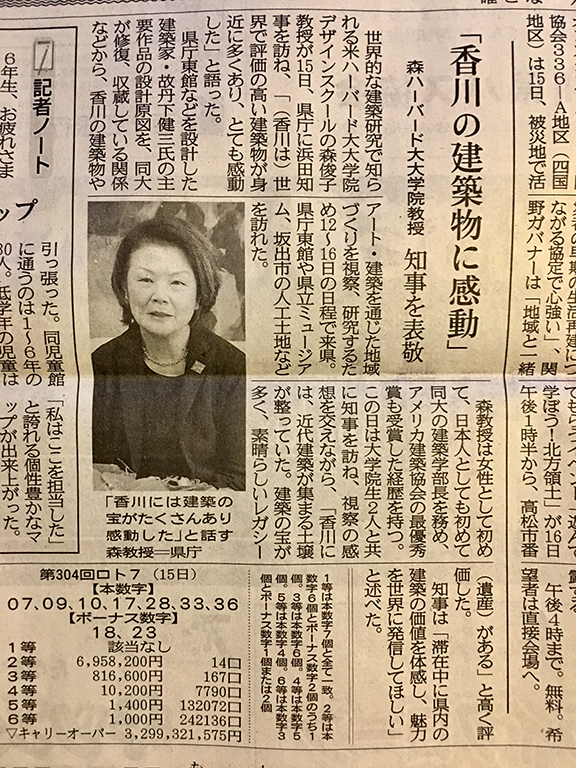Professor Toshiko Mori Leads Architecture Studio to Japan
In February 2019, Professor Toshiko Mori led an advanced architecture design studio from the Graduate School of Design on a week-long trip to study the legacy of modernist architecture in Japan, with a focus on the Seto Inland Sea region.
Initiated by two key projects promoting world peace – Kenzo Tange's Hiroshima Peace Memorial Museum (1955) and Togo Murano's Memorial Cathedral for World Peace in Hiroshima (1954) – the modernist architecture movement emerged after World War II and gained momentum with the support of governments, businesses, and cultural patrons around the Seto Inland Sea region. Currently, seven prefectures have united to raise awareness of Modernist and contemporary architecture by encouraging art and architectural tourism in the region. After studying the post-war history and the cultural, political, and economic background of Modernism, the studio investigated the Kagawa Gymnasium (1964), named one of the most endangered architectural monuments by the World Monument Fund’s Watch List of 2018, and proposed a design for its new use based on their research before and during the trip.
While in Japan, the studio visited various art museums and architectural sites throughout Tokyo, Okayama, Kagawa, and Hiroshima prefectures (including the three islands Naoshima, Teshima, and Inujima), and met with the Governor of Kagawa Prefecture.
For news coverage on Prof. Mori’s visit, please view the pages below (in Japanese):
https://headlines.yahoo.co.jp/hl?a=20190215-00010000-ksbv-l37
https://www.pref.kagawa.lg.jp/content/dir4/dir4_3/dir4_3_2/wilps2190206120107.shtml
